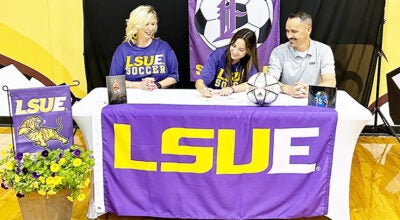MURRELL COLUMN: UIL’s two big misses
Published 5:34 pm Thursday, October 20, 2016
The Universally Inconsistent League dropped the ball again.
When its high school baseball and softball playoffs roll around next spring, we journalists are going to be left with calling all participating coaches about whether their upcoming round is a one-game tussle or best-of-three series.
Did the past spring not teach us anything (other than to stay dry)? Are some best-of-three series worth playing? Isn’t less more, as in less travel is more gasoline in the tank?
The UIL couldn’t care less. Oh, but I do … and it’s not for my own sake.
Any ombudsman overseeing the flow of the UIL playoffs knows change is needed.
First, make the first two rounds double-elimination with the top seed as the host, if you really care about double-elimination and finishing games soon. As I suggested in May, the third round can be best-of-three to determine each regional pool of four teams in another two-and-out format, with the state semifinals and finals using best-of-three series. If done consistently, the best-of-three is a good format.
But we’re going to see the same inconsistency throughout the playoffs. The UIL declined to approve a measure making the first two rounds double-elimination.
Now, fast forward to the football season: This whole business of agreeing on neutral turf even if a team wins a district championship is terrible. There’s no real reward for winning district without home field advantage.
That’s a shame. Memorial Stadium came alive last Friday in a playoff-like atmosphere. Port Neches-Groves brings it every home game.
And, we’re only going to see that from each school five times per year. The UIL shot down a measure to allow the top two teams in each district to host just a first-round game.
Texas’ high school activity bureaucrats are going to have to think as big as the state they serve.
Who were we to fool ourselves into thinking Houston or Memphis or Brigham Young even would actually get into the rural-happy Big 12?
It’s not that those schools didn’t deserve consideration, but the Texases and Oklahomas were not willing to risk additional big bucks letting either one of them compete for their championships. When an already sustainable athletic department stands to gain fewer dollars in the conference profit-sharing process because two more universities get to cash in — and face increased pressure of winning nearby recruits against two more universities — it has plenty of Benjamins to lose.
(Any extra funds to pay off a fired coach is always helpful.)
This, folks, is partly how we got into this conference-shifting tomfoolery. Meanwhile, many Division I also-rans are struggling financially to attract competitive athletes to maintain their athletic departments as viable recruiting tools for the well-rounded student. (Chemistry majors need a reason to party on Saturdays; hence, there’s college football.)
Until ESPN finds a reason to heavily market the Southland or Southwestern Athletic conferences, the network will remain the tie that binds the crème de la crème of Division I. We’re just a few years away from an Elite Collegiate Athletic Association, and the American Athletic Conference will be lucky to receive any consideration for elite status.
So far, the American is losing.
•
I.C. Murrell can be reached at 721-2435 or at ic.murrell@panews.com. On Twitter: @ICMurrellPANews






